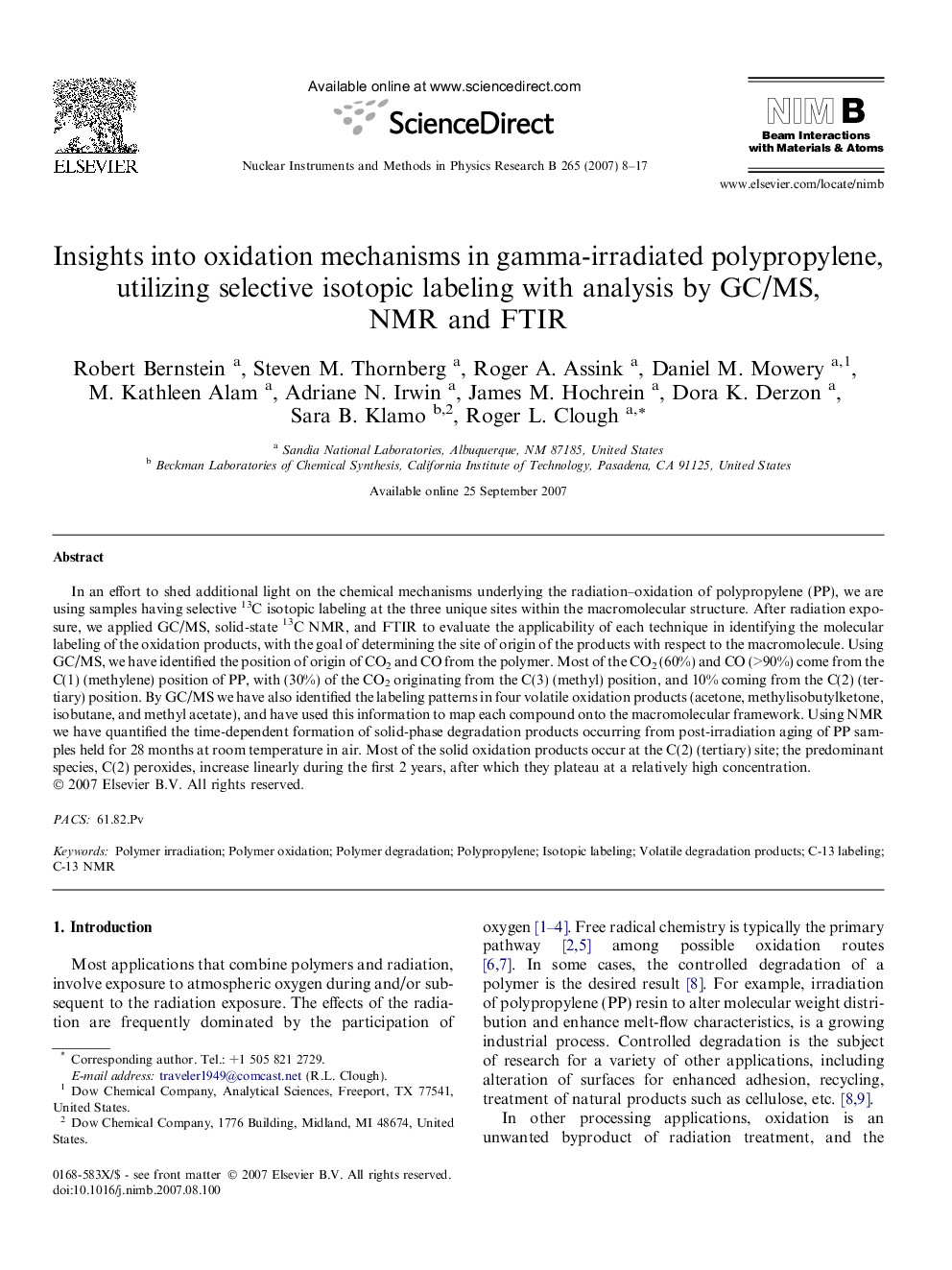| Article ID | Journal | Published Year | Pages | File Type |
|---|---|---|---|---|
| 1683374 | Nuclear Instruments and Methods in Physics Research Section B: Beam Interactions with Materials and Atoms | 2007 | 10 Pages |
In an effort to shed additional light on the chemical mechanisms underlying the radiation–oxidation of polypropylene (PP), we are using samples having selective 13C isotopic labeling at the three unique sites within the macromolecular structure. After radiation exposure, we applied GC/MS, solid-state 13C NMR, and FTIR to evaluate the applicability of each technique in identifying the molecular labeling of the oxidation products, with the goal of determining the site of origin of the products with respect to the macromolecule. Using GC/MS, we have identified the position of origin of CO2 and CO from the polymer. Most of the CO2 (60%) and CO (>90%) come from the C(1) (methylene) position of PP, with (30%) of the CO2 originating from the C(3) (methyl) position, and 10% coming from the C(2) (tertiary) position. By GC/MS we have also identified the labeling patterns in four volatile oxidation products (acetone, methylisobutylketone, isobutane, and methyl acetate), and have used this information to map each compound onto the macromolecular framework. Using NMR we have quantified the time-dependent formation of solid-phase degradation products occurring from post-irradiation aging of PP samples held for 28 months at room temperature in air. Most of the solid oxidation products occur at the C(2) (tertiary) site; the predominant species, C(2) peroxides, increase linearly during the first 2 years, after which they plateau at a relatively high concentration.
